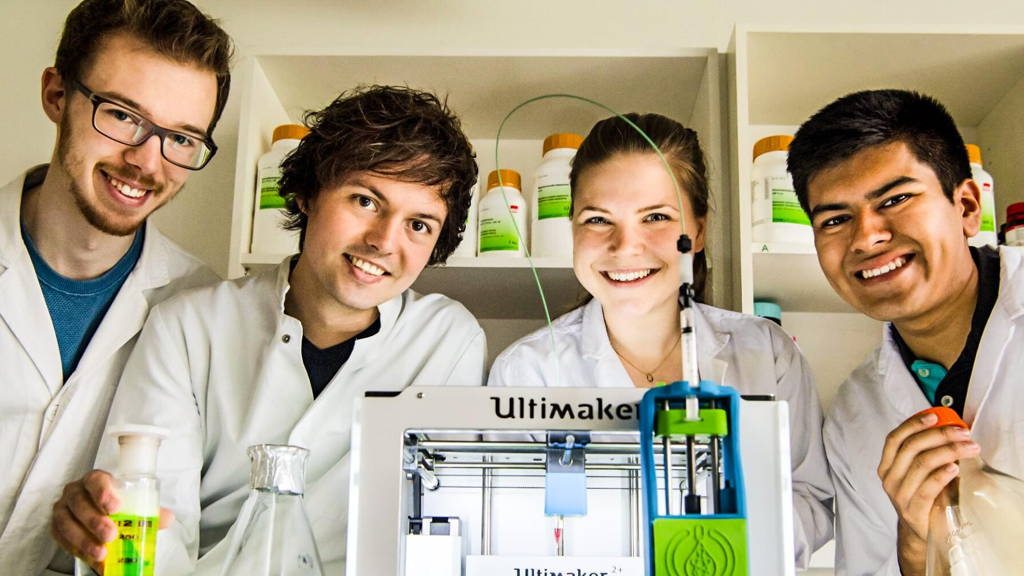In 2015, 759 organ transplantations were performed in the Netherlands. The procedure comes with a price: from the salary of the operating physicians, to transporting the organs. Another problem is rejection of the organ; even after replacing one of the organs, the question remains whether the body of the recipient is going to accept it. Furthermore, in mainstream organ transplants, it is necessary for someone to die first. These points show that there are a lot of possibilities for improvement in organ donation.
Human cells however come with one problem: they don’t have printer-friendly material qualities. To solve this problem, researchers have to use bio-ink. Bio-ink is a substance, which can be mixed with human cells. This makes them printable. Now having solved one problem, another one emerges: when using bio-ink, temporary scaffolds are needed to support the organic structures.
The new ink speeds up the process as well, by making three-dimensional intercellular contact possible. This makes it possible to create complex tissue and multiple cell types.
###BiotInk###
3D-bioprinting
3D-bioprinting creates a lot of new possibilities in this world. 3D-printing the organs will cut costs and reduce the mortality rate. Researchers have already succeeded in creating tissue from human cells with 3D-printers. This shows that there is a real possibility to 3D-print organs in the future.Human cells however come with one problem: they don’t have printer-friendly material qualities. To solve this problem, researchers have to use bio-ink. Bio-ink is a substance, which can be mixed with human cells. This makes them printable. Now having solved one problem, another one emerges: when using bio-ink, temporary scaffolds are needed to support the organic structures.
BiotINK
Students from Munich figured out a solution for this problem: a hacked Ultimaker 2+ printer and a specially developed bio-ink. BiotINK consists of a mix of biotin and streptavidin, which makes the ink act like superglue. The biotin connects itself with the receptors, and makes sure the cells stay in their place during printing. This makes the printing process a lot more precise, which is of vital importance when printing organs. This also makes aforementioned scaffolds unnecessary.The new ink speeds up the process as well, by making three-dimensional intercellular contact possible. This makes it possible to create complex tissue and multiple cell types.
###BiotInk###






